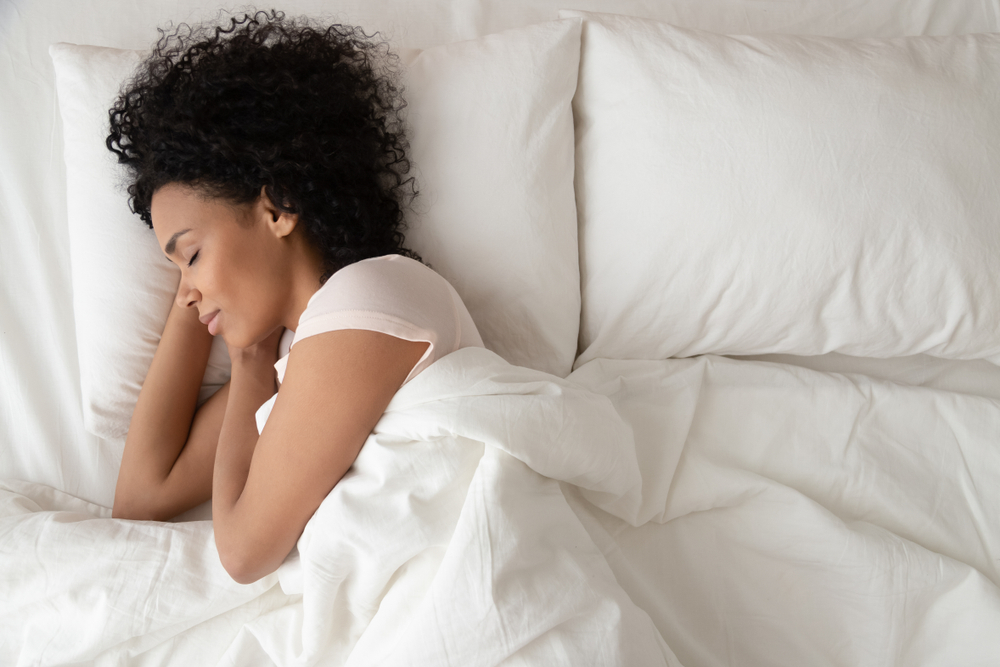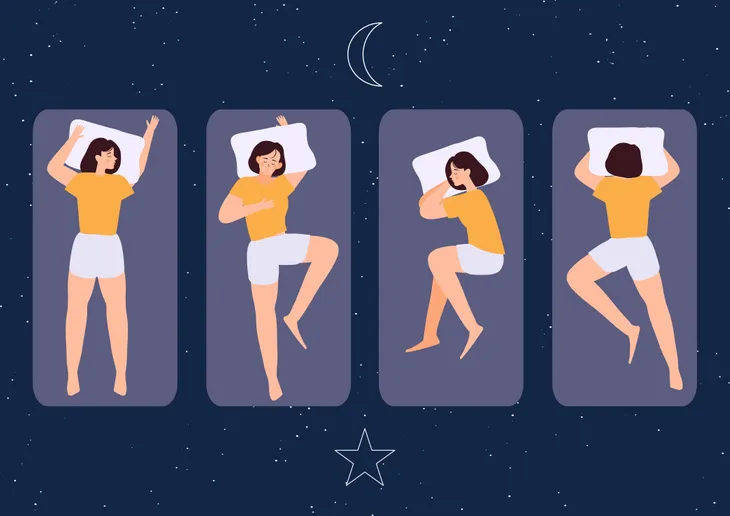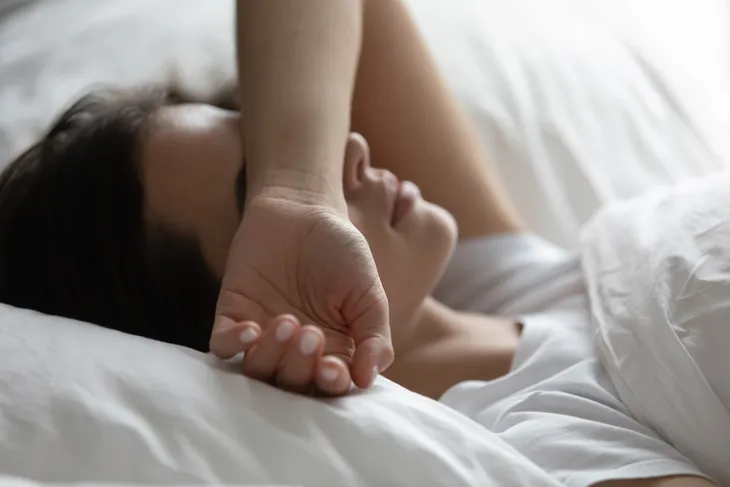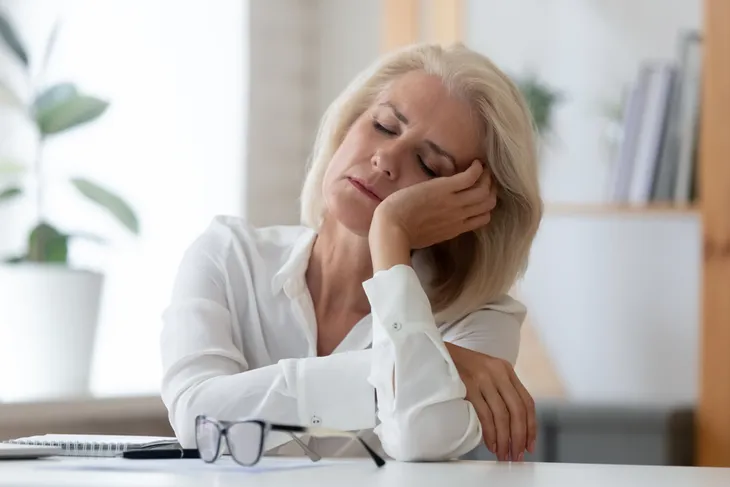- Parasomnia is a sleep disorder in which an individual may exhibit unusual movements or experiences that disrupt their sleep.
- Parasomnias are typically categorized by non-REM and REM parasomnias, but there are also some less common parasomnias.
- Some common causes of parasomnia include stress, anxiety, certain medications, and sleep deprivation, to name a few.
Parasomnias are disruptive sleep-related disorders that may involve abnormal movements, talking, emotions or actions while sleeping. It’s common for those affected by parasomnia to convince others that they are awake. Some examples of parasomnias include sleepwalking, sleep terrors, sleep paralysis, and nightmare disorders. Follow along for everything you should know about parasomnias including the types, symptoms, causes, and different methods of treatment.
What is Parasomnia?
Parasomnia is “a sleep disorder that involves unusual and undesirable physical events or experiences that disrupt your sleep,” according to Cleveland Clinic. These sleep disruptions can occur during any stage of sleep, including during the transition from being awake to falling asleep, according to Healthline.
Some common forms of parasomnia include abnormal movements, talking, expressing emotions, or doing unusual activities while sleeping. Those with parasomnias typically do not remember these incidents. Parasomnias are relatively common, but it’s important to be aware of them since they may lead to a dangerous situation if the individual is not unaware of their surroundings.
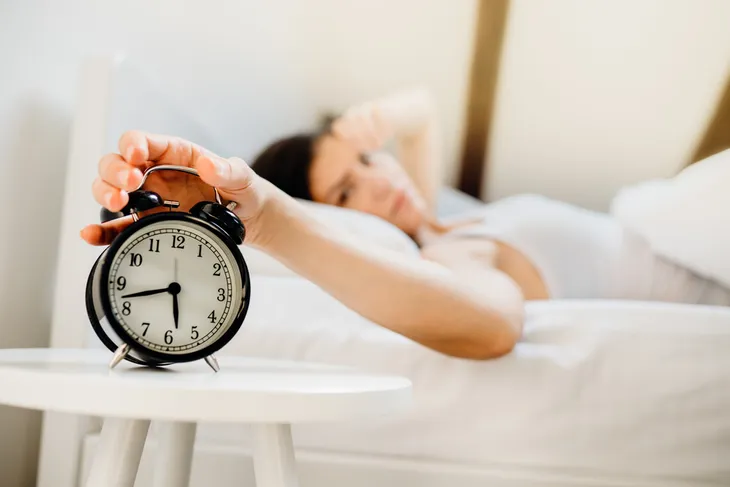 Shutterstock/eldar nurkovic
Shutterstock/eldar nurkovicSleep Stages and Parasomnias
Sleep occurs in stages, and parasomnias are typically grouped based on the stage of sleep in which they occur. The two main stages of sleep where parasomnias occur are REM sleep and non-REM sleep, but there is also a subcategory of parasomnias that fall into the “other” category.
Non-rapid eye movement (REM) sleep occurs during the first three stages of sleep. This includes the stages of first falling asleep to about halfway through the night, according to Cleveland Clinic. REM sleep, on the other hand, occurs when your eyes move rapidly under your eyelids and your heart rates, breathing, and blood pressure all increase. This time of sleep is when the most vivid dreaming occurs. Your body cycles between non-REM and REM sleep about every 90 to 110 minutes.
Non-REM Parasomnias
Parasomnias that occur during non-REM sleep typically involve physical and verbal activity. They commonly occur in those who are between five and 25 years old, and for those who have a family history of similar parasomnias.
During non-REM parasomnias, the individual will not be completely aware of the events and are typically not responsive to others’ attempts to interact. It’s common to not remember or only partially remember the event the next day. According to Cleveland Clinic, some common types of non-REM parasomnias include:
- Sleepwalking: Also known as somnambulism, sleepwalking is when an individual gets out of bed and moves around with eyes open, but they are actually asleep. Sleepwalking may also involve mumbling or talking. Sleepwalking can be dangerous since the individual is unaware of their surroundings.
- Sleep Terrors: This disorder typically involves waking up abruptly in a terrified state. This may involve screaming or crying. A sleep terror is often brief and occurs for under 30 seconds, but may last up to a few minutes. Side effects include a racing heart rate, fast breathing, and sweating.
- Confusional Arousals: This parasomnia occurs when you appear to be partially awake, but are confused and disoriented. You may remain in bed, sit up, have your eyes open, or cry. It’s common to have difficulty understanding questions or responding in a reasonable way. This may occur for a few minutes, or hours.
- Sleep-Related Eating Disorder: This disorder occurs when you eat and drink while partially awake. You may reach for food or food combinations that you wouldn’t typically while awake. This could be dangerous if an individual reaches for inedible or toxic foods, consumes too much food, or injures themselves preparing food.
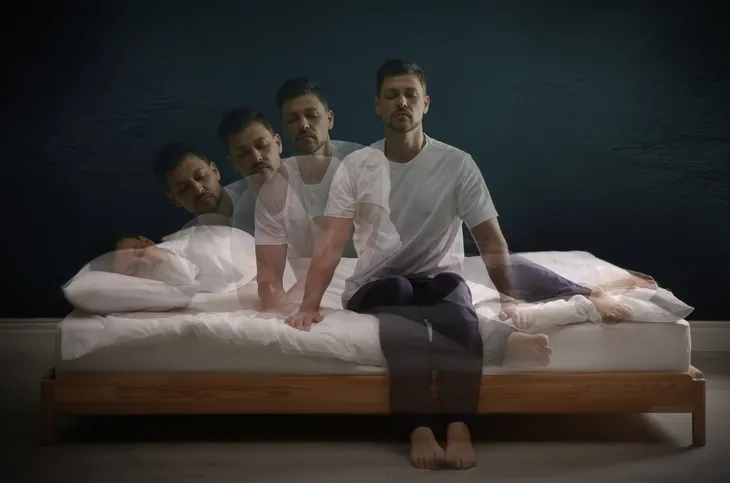 Shutterstock/New Africa
Shutterstock/New AfricaREM Parasomnias
Parasomnias that occur during REM sleep typically occur during the later part of the night. It’s more common to remember all or part of the dream if awakened during REM sleep parasomnia. Cleveland Clinic explains some common types of non-REM parasomnias include:
- Nightmare Disorder: This parasomnia involves vivid dreams that cause feelings of anxiety, fear, or terror. Those experiencing nightmare disorder may feel a threat to their life or security. It’s common to be able to recall the traumatic nightmare in detail. Nightmare disorder is more common if you are experiencing a challenging life event or are under intense stress, illness, or fatigue.
- Recurrent Isolated Sleep Paralysis: This sleep disorder is when an individual may feel as though they cannot move their body or limbs while sleeping. It’s common to experience this before you fall asleep or as you are waking up. These episodes can last anywhere from a few seconds to a few minutes.
- REM Sleep Behavior Disorder (RSBD): This sleep disorder is when an individual will speak, act out, or make aggressive movements as a reaction to a nightmare. This is common in older adults with a neurodegenerative disease such as Parkinson’s disease, stroke, or multiple system atrophy.
Less Common Types of Parasomnias
While the above parasomnias are the most common, there are some less-common parasomnias that some individuals may experience. According to Cleveland Clinic, below are some less common types of parasomnias:
- Exploding Head Syndrome: This sleep disorder is when an individual experiences a loud or crashing noise in their head as they fall asleep. This may also be experienced as a bright flash of light. It’s typical to experience a sudden muscle jerk during this experience.
- Sleep Enuresis: This disorder, also known as bedwetting, often occurs in young children. To diagnose this parasomnia, sleep enuresis must happen in children aged 5+ and occur at least two times a week for at least three months.
- Sleep-Related Hallucinations: This sleep disorder is when an individual experiences hallucinations upon waking up or falling asleep. With this condition, the individual may see, hear, or feel things that aren’t really there.
- Sleep-Related Groaning: With this sleep disorder, it’s common to experience repeat episodes of long groaning noises followed by sighs or grunts while sleeping.
Causes of Parasomnias
The cause of parasomnias can differ for each individual’s situation, but there are a few common causes to make note of. Healthline explains that some common causes include stress, anxiety, depression, PTSD, alcohol, substance abuse, head injury, pregnancy, sleep deprivation, genetics, or an irregular sleep schedule.
Parasomnia may also be related to other medical issues that disrupt sleep such as pain, restless leg syndrome, obstructive sleep apnea, narcolepsy, or Parkinson’s disease. Additionally, certain medications may trigger parasomnias such as those that treat depression, psychotic disorders, high blood pressure, seizures, or depression.
Symptoms of Parasomnia
Each individual may experience unique symptoms when it comes to parasomnia. Aside from unusual behavior, Healthline explains that some other symptoms include waking up disoriented or confused, difficulty sleeping through the night, or not remembering certain activities.
The individual may find unexplained cuts or bruises on the body, feel tired throughout the day, or display movements or expressions that they don’t remember.
Parasomnia in Children
Parasomnia affects more children than adults, according to Healthline. Parasomnia is even more common for children who experience neurological or psychiatric conditions, such as ADHD or epilepsy. Common triggers for children to experience parasomnia include stress and sleep deprivation. Children with parasomnia may experience more crying and fear during their episodes, which may cause them to become fearful to go to sleep alone.
The likely reason that children experience parasomnia more often is because their sleep-wake style is still immature, meaning their boundaries between being awake and asleep are still underdeveloped. Because of this, most children grow out of parasomnia by adulthood.
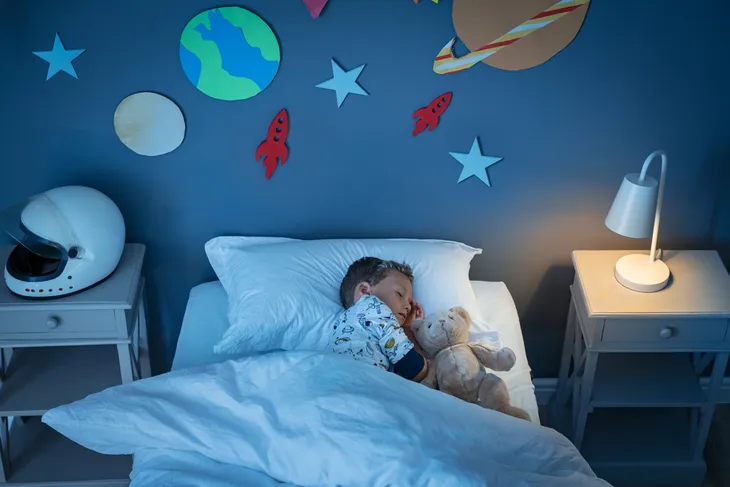 Shutterstock/Ground Picture
Shutterstock/Ground PictureDiagnosing a Parasomnia
If you believe you are experiencing parasomnia, it may be helpful to contact your primary care doctor to help with a diagnosis. Your doctor may refer you to a sleep specialist to further investigate the situation.
The process of a diagnosis will typically involve talking to your doctor about your medical history including health conditions, lifestyle, medications, and family history. Your doctor will also likely want information about your sleep history. They may ask you to keep a sleep diary to provide examples of your sleep behavior patterns or ask someone who lives with you to observe your behavior. Lastly, your doctor may request a polysomnogram, which is when the patient will sleep in a lab overnight to allow a specialist to observe sleep behavior and make note of brain waves, breathing, and heart rate to further confirm a diagnosis.
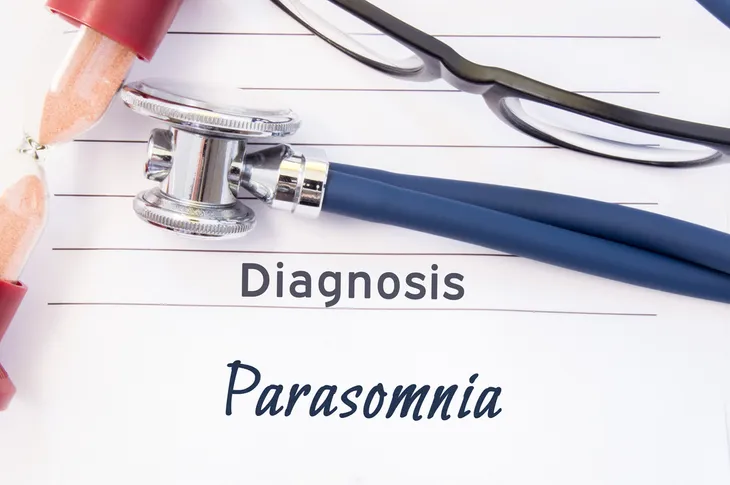 Shutterstock/Shidlovski
Shutterstock/ShidlovskiParasomnia Treatment: Medication
One form of treatment for parasomnia is to consider medication, especially if your parasomnia is frequent or recurring. Healthline explains that your doctor may recommend the following medications to treat parasomnia: topiramate, antidepressants, dopamine agonists, melatonin, levodopa, or benzodiazepines.
Alternatively, since medication may sometimes trigger parasomnia, your doctor may want to try an alternative medication or consider changing the dose of a current medication. Always consult your doctor before making any changes to your medication.
Parasomnia Treatment: Cognitive Behavioral Therapy
An alternative treatment route to medication is to consider cognitive behavioral therapy (CBT). This treatment is quite common for parasomnia since this sleep disorder is often related to mental health issues such as stress, anxiety, and PTSD.
Your doctor or sleep specialist may also recommend trying psychotherapy, relaxation therapy, or hypnosis alongside cognitive behavioral therapy to maximize results.
 Shutterstock/UfaBizPhoto
Shutterstock/UfaBizPhotoHome Treatments and Prevention for Parasomnia
There are treatment options and preventative measures you can try at home to help with parasomnia. Healthline explains that your doctor may suggest scheduling awakenings every 15 to 30 minutes. This can help you or your child from spontaneously waking up and experiencing parasomnia. It can also help break certain patterns and tends to be the most useful for sleepwalking and night terrors.
Additionally, you may want to consider updating your environment to accommodate parasomnia. This could include sleeping alone or removing hazardous items from your home. You could also consider locking the windows and doors, installing alarms, or placing extra padding on or around the bed.
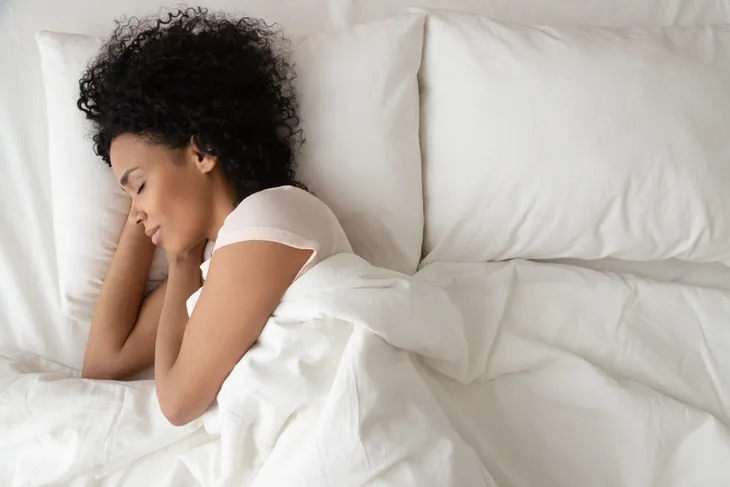 Shutterstock/fizkes
Shutterstock/fizkes